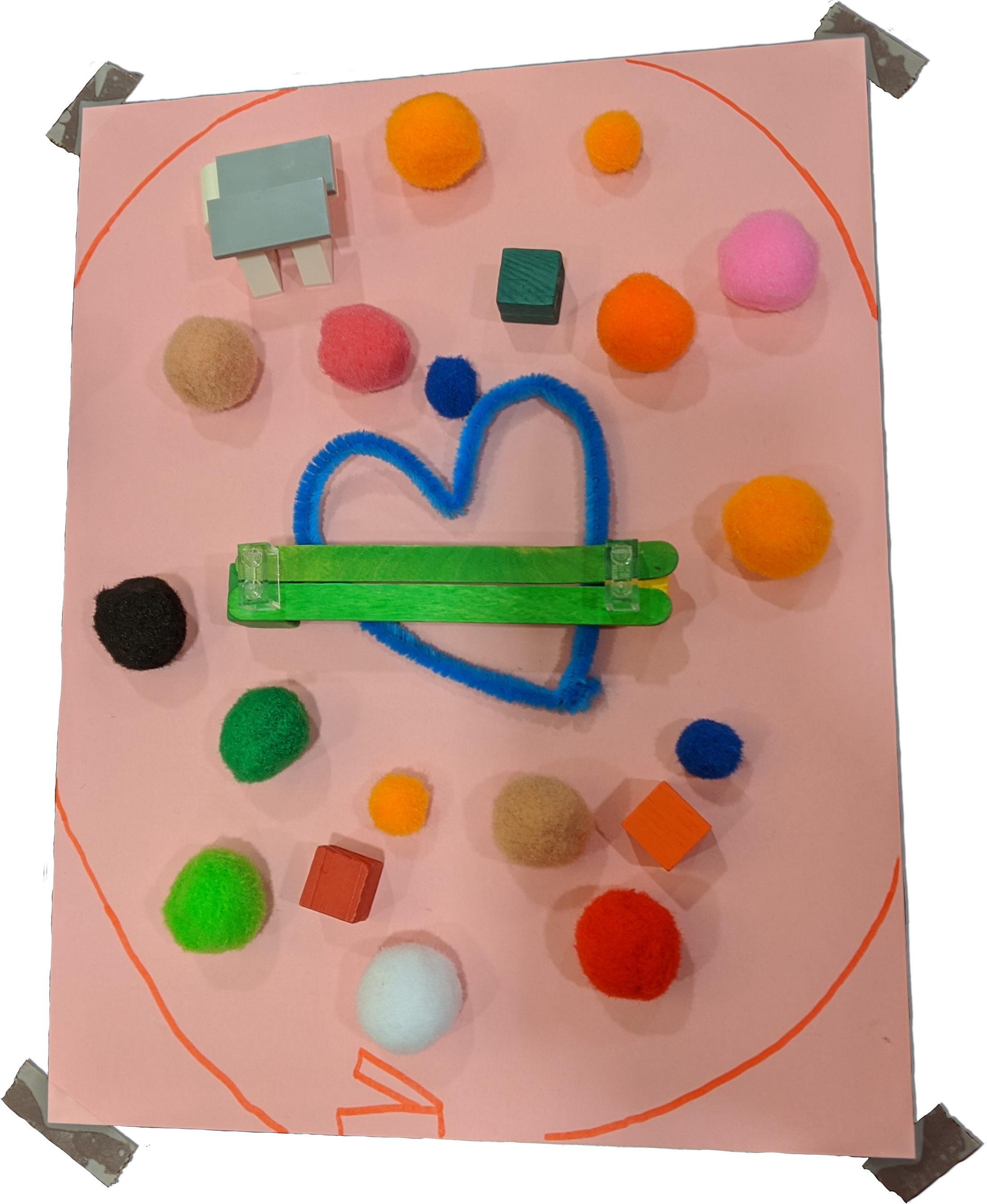On Friday, January 31, the TEAL Community of Practice hosted a TEAL Talk breakfast. A mix of students, faculty, and staff chatted TEAL (technology enhanced active learning) over frittata (yes, it was worth the early hour!), cranberry buns, and coffee.
Actually, it was less TE and more AL, which was fitting given that we specifically selected a non-technology enhanced room for the meeting (GB202). Active learning happens in a variety of locations with a variety of instructional methods and sometimes, stepping outside a TEAL classroom offers a new perspective.

Plus, we had ulterior motives – we didn’t want to be in TEAL room because a new perspective was exactly what we were looking for! Though the hour session was largely informal, we did have one planned activity. Each table was given a collection of supplies – think lego, markers, popsicle sticks, blocks, plasticine, fuzzy balls, the works! – and were asked to imagine their ideal active learning space.
So, what did people come up with? A LOT. And most of it didn’t have to do with tech! What did come out of the brainstorming? A few themes, discussions, and not even a touch of controversy (in no particular order):
- To have a central podium or not to have a central podium? TEAL rooms are purposefully designed to discourage lecturing by affording other types of instructional methods (namely, collaborative and active learning). But, that is at odds with the fact that more classes do involve a few minutes (or more!) when everyone paying attention to a single focal point is essential. This is a challenge on multiple fronts – the physical set up has to support movement/change as well as the room technology.
- Flexibility, Flexibility, Flexibility! Truly flexible lay outs that allow for a “change of set” during a class would allow easier shifting from active learning to traditional delivery. Tables that can be re-configured for different sizes of groups, as well as other configurations (like a big square or circle). This ties into the central podium idea, too – what if the spaces had a moveable podium? Evolving wireless technologies and devices could help enable this vision in the near future.
- Design for Physical and Emotional Comfort – A lot of the conversation about ideal spaces involved non-tech upgrades. Good lighting, comfortable seating, screens at tables, smaller class size ratios, all were ideas on how to enhance the learning space. If the goal is to have students work together, the space should facilitate conversation and collaboration in an authentic way – perhaps less rigidity and more heart.

- More Data Please! TEAL rooms disrupt traditional feedback mechanisms. Gone are the “easy” (it is of course not always easy…) days of immediate feedback based on eye contact, body language and other visual and audible indicators. How do we give teaching teams the information they need to adapt their behaviour during a class? What data do they need? A lot of interesting talk about proximity sensing (do instructors visit students equitably?), volume indication (can we use wall panels or other indicators to indicate noise level?), and participation tracking (who is asking questions and who is not?).
And of course – more plugs! Overall, some big ideas and some that could be implemented or improved upon right now. An ongoing conversation that everyone wanted to move forward on was to continue discussing the general wellbeing of those using the space. How does active learning – with very different cognitive and social demands – affect students, instructors, teaching assistants, staff, all of those who learn and teach in the spaces.
Interested in joining the TEAL CoP? Sign up online for invitations to our in-person and online sessions and to be added to our Quercus course.